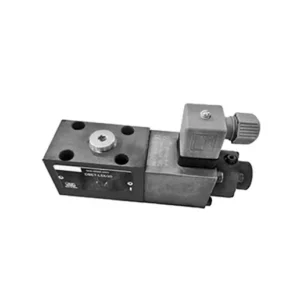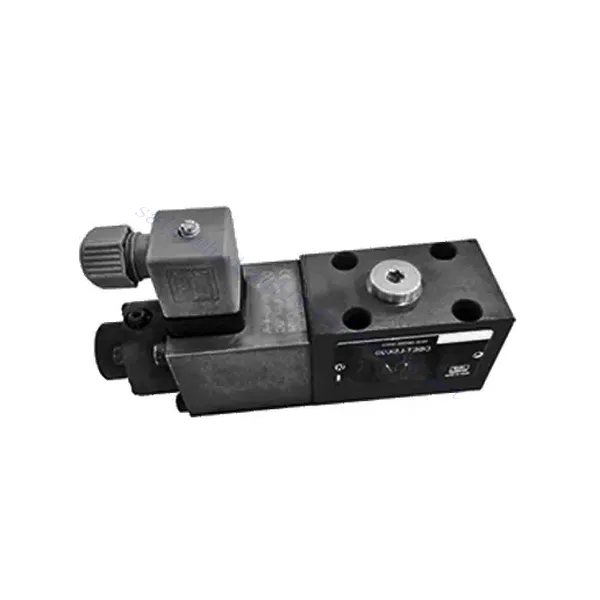DBET(E) Series Proportional Pressure Relief Hydraulic Valve
As one of the hydraulic cylinders manufacturers, suppliers, and exporters of mechanical products, We offer hydraulic cylinders and many other products.
Please get in touch with us for details.
Mail:sales@hydraulic-cylinders.net
Manufacturer supplier exporter of hydraulic cylinders.
DBET(E) Series Proportional Pressure Relief Hydraulic Valve

The DBET(E) series proportional pressure relief hydraulic valve is a cutting-edge component designed to deliver precise pressure control in hydraulic systems. With its advanced proportional control technology and exceptional performance, this valve optimizes system efficiency, enhances safety, and prolongs the lifespan of hydraulic equipment.
The DBET(E) series proportional pressure relief hydraulic valve is an indispensable component for achieving precise pressure control in hydraulic systems. With its proportional pressure regulation, enhanced efficiency, and equipment protection features, this valve optimizes system performance while ensuring the safety and longevity of hydraulic equipment. By following the recommended usage methods and maintenance guidelines, you can harness the full potential of the DBET(E) series proportional pressure relief hydraulic valve, maximizing the performance and reliability of your hydraulic system. Upgrade your hydraulic setup today and experience optimal pressure control with the DBET(E) series valve.
DBET(E) Series Proportional Pressure Relief Hydraulic Valve Key Characteristics:
- Proportional Pressure Control:
- The DBET(E) series valve offers precise and proportional pressure relief, allowing for accurate and dynamic pressure regulation in hydraulic systems.
- It maintains a consistent pressure level against varying loads, ensuring optimal performance and preventing damage to hydraulic components.
- Enhanced System Efficiency:
- By providing proportional pressure control, this valve helps optimize system efficiency by reducing energy consumption and minimizing pressure fluctuations.
- It ensures that hydraulic equipment operates at the desired pressure, resulting in improved productivity and reduced operational costs.
- Safety and Equipment Protection:
- The DBET(E) Series Valve acts as a safety measure by limiting the pressure within the hydraulic system, preventing overloading and potential damage to equipment or operators.
- It safeguards sensitive components from excessive pressure, extending their lifespan and reducing the risk of system failures.
- Flexibility and Adaptability:
- This valve is available in different sizes and pressure ranges, allowing for compatibility with various hydraulic systems and applications.
- Its adaptable design makes it suitable for various industries, including manufacturing, construction, agriculture, and more.
DBET(E) Series Proportional Pressure Relief Hydraulic Valve Parameter:
| Fluid | Mineral oil suitable for NBR and FKM seal | |
| Phosphate ester for FKM seal | ||
| Fluid temperature range | ℃ | -30 to +80 (NBR seals) |
| -20 to +80 (FKM seals) | ||
| Viscosity range | mm2/s | 15 to 380 |
| Degree of contamination | Maximum permissible degree of fluid contamination: Class 9 and ISO4406 Class 20/18/15 | |
| Max. operating pressure (Port P) | bar | 350 |
| Max. setting pressure | bar | 50; 100; 200; 315; 350 |
| Min. settable pressure | See characteristic curves | |
| Min. settable pressure at 0 command value | =Min. settable pressure | |
| Return pressure(Port T) | bar | Separate and at zero pressure to tank |
| Max. flow-rate | L/min | 2 |
| Linearity | ± 3.5 % of max. settable pressure | |
| Hysteresis | ± 1.5 % of max. settable pressure | |
| Repeatability | < ± 2 % of max. settable pressure | |
| Switching time | ms | 30 to 150 (system dependent) |
DBET(E) Series Proportional Pressure Relief Hydraulic Valve Advantages:
• Direct, to restrict system pressure
• Installation face follows ISO 4401-03-02-0-05
• Five pressure ranges
• Accompanying electronic amplifier VT-2000 or plugin amplifier VT-SSPA1-…-L2X (separate order)
Usage Method Of DBET(E) Series Proportional Pressure Relief Hydraulic Valve :
- System Evaluation:
- Assess the specific requirements of your hydraulic system, including the desired pressure range, maximum flow rate, and compatibility with existing components.
- Determine if the DBET(E) series valve suits your application based on its pressure control capabilities and compatibility with your system.
- Valve Selection:
- Choose the appropriate variant of the DBET(E) series valve based on your system parameters, required pressure range, and flow capacity.
- Consider maximum pressure rating, response time, and operational conditions.
- Installation:
- Follow the manufacturer’s installation instructions carefully, ensuring proper alignment and secure valve mounting.
- Connect the valve to the hydraulic system, paying attention to the flow direction indicators and ensuring leak-free connections.
- Pressure Setting:
- Adjust the pressure relief setting of the valve to match the desired pressure range for your application.
- This can typically be achieved through proportional control signals or adjustments on the valve itself, depending on the specific model.
How To Add A Hydraulic Valve To A Tractor?
Adjusting a hydraulic flow control valve allows you to regulate the speed or flow rate of hydraulic fluid in a hydraulic system. By controlling the flow, you can optimize the performance of hydraulic cylinders, motors, or other hydraulic components. Here’s a step-by-step guide on how to adjust a hydraulic flow control valve:
- Identify the Flow Control Valve:
- Locate the flow control valve in your hydraulic system. It is typically installed in the hydraulic line leading to the component you want to control, such as a cylinder or motor.
- Understand the Valve Design:
- Familiarize yourself with the specific design of the flow control valve you are working with. Different valves may have varying adjustment mechanisms, such as a knob, screw, or handle.
- Determine the Desired Flow Rate:
- Assess the requirements of your hydraulic system and determine the desired flow rate or speed for the component you are controlling. This will guide you in adjusting the flow control valve accurately.
- Prepare the System:
- Before making any adjustments, shut off the hydraulic system and relieve the pressure by moving the control levers back and forth or following the manufacturer’s recommended procedure.
- Locate the Adjustment Mechanism:
- Identify the adjustment mechanism on the flow control valve. It could be a knob, screw, or handle positioned on the valve body or adjacent to it.
- Adjust the Valve:
- If the valve has a knob or handle, turn it clockwise to decrease the flow rate or counterclockwise to increase the flow rate. If the valve has a screw, turn it clockwise to reduce the flow or counterclockwise to increase it.
- Make Incremental Adjustments:
- When adjusting the flow control valve, make small, incremental changes to avoid sudden or drastic variations in flow rate. This allows you to fine-tune the speed and achieve the desired performance.
- Observe the System:
- With each adjustment, observe the hydraulic system and the component being controlled. Pay attention to the speed or flow rate to see if it aligns with the desired outcome.
- Test and Refine:
- Operate the hydraulic system and the controlled component to test the effectiveness of your adjustments. If necessary, continue making incremental changes until the desired flow rate or speed is achieved.
- Lock the Adjustment:
- Once you have achieved the desired flow rate, secure the adjustment mechanism to prevent unintended changes. Some valves may have a locking nut or set screw that can be tightened to hold the adjustment in place.
- Monitor and Revisit:
- Regularly monitor the performance of the hydraulic system and the controlled component. If there are changes in the system or if the desired flow rate needs to be adjusted, revisit the flow control valve and repeat the adjustment process as needed.
Capability & Capacity Of Factory:
(1) Assembly
We have a first-class independent research and development assembly platform. The hydraulic cylinder production workshop has four semi-automatic lifting cylinder assembly lines and one automatic tilt cylinder assembly line, with a designed annual production capacity of 1 million pieces. The special cylinder workshop is equipped with various specifications of a semi-automatic cleaning assembly system with a designed annual production capacity of 200,000 and equipped with famous CNC machining equipment, a machining center, a high-precision cylinder processing special equipment, a robot welding machine, an automatic cleaning machine, automatic cylinder assembly machine, and automatic painting production line. Existing critical equipment of more than 300 sets (sets). The optimal allocation and efficient use of equipment resources ensure the accuracy requirements of products and meet the high-quality needs of products.


(2) Machining
The machining shop is equipped with a customized inclined rail turning center, machining center, high-speed honing machine, welding robot, and other related equipment, which can handle the processing of cylinder tubes with a maximum inner diameter of 400mm and a maximum length of 6 meters.

(3) Welding

(4) Painting & coating
With small and medium-sized cylinder automatic water-based paint coating lines, to achieve automatic robot loading and unloading and automatic spraying, the design capacity of 4000 pieces per shift;
We also have a semi-automatic paint production line for large cylinders powered by a power chain, with 60 cases per shift design capacity.


(5) Testing
We have first-class inspection facilities and test beds to ensure that the performance of the cylinder meets the requirements.

We are one of the best hydraulic cylinder manufacturers. We can offer comprehensive hydraulic cylinders. We also provide corresponding agricultural gearboxes. We have exported our products to clients worldwide and earned a good reputation because of our superior product quality and after-sales service. We welcome customers at home and abroad to contact us to negotiate business, exchange information, and cooperate with us!
Take a Tour of Our VR Factory:
Take a tour of our VR factory with the following
Hydraulic Cylinder Application:


